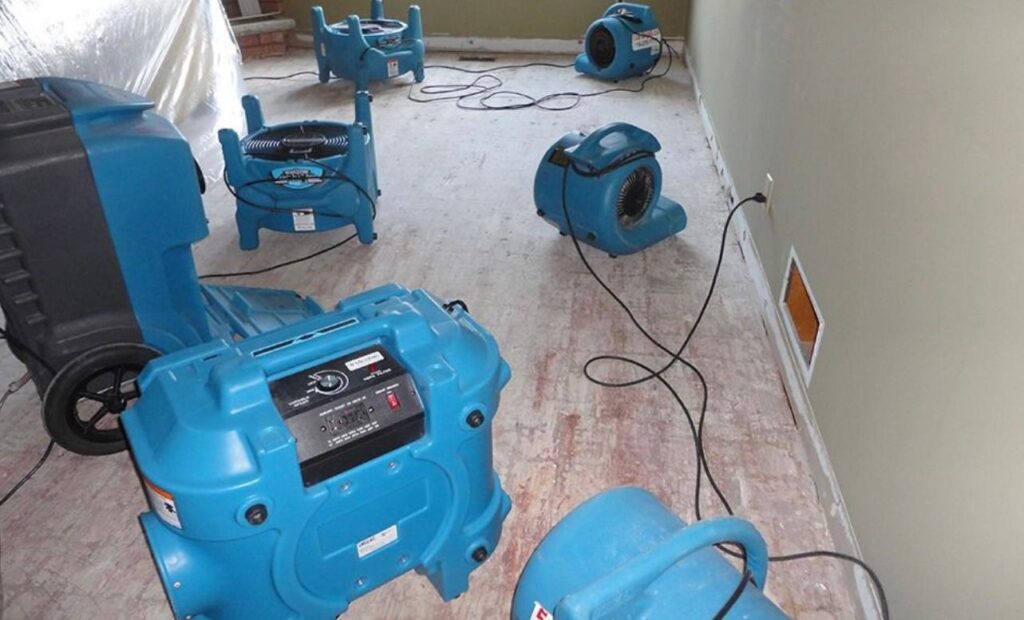Introduction
Say goodbye to the lurking menace in your bathroom: mold. If you’ve ever spotted those unsightly black or green patches on your walls, tiles, or shower curtains, you know how challenging it can be to remove this stubborn invader. But fear not! In this comprehensive guide, we’ll walk you through the ultimate strategies for getting rid of bathroom mold once and for all.
From understanding the causes of mold growth to implementing effective prevention techniques, we’ve got you covered. Discover the best cleaners and natural remedies to tackle different types of mold, and learn how to properly seal and vent your bathroom to prevent future outbreaks. We’ll also share expert tips to maintain a moisture-free environment that mold simply can’t thrive in.
Whether you’re a homeowner, renter, or just someone tired of battling mold in your bathroom, this guide will equip you with the knowledge and tools you need to eradicate this common problem. Don’t let mold control your bathroom – take control and say goodbye to mold once and for all!
The Dangers of Bathroom Mold
Bathroom mold is not only unsightly, but it can also pose serious health risks. Mold spores can trigger allergies and respiratory problems, especially in individuals with weakened immune systems or pre-existing conditions. Inhaling mold spores can lead to symptoms such as coughing, sneezing, wheezing, and even asthma attacks. Moreover, certain types of mold, such as black mold, produce mycotoxins that can be harmful when exposed to for extended periods.
Mold growth in bathrooms is typically a result of excessive moisture and poor ventilation. Bathrooms provide the perfect environment for mold to thrive due to the combination of high humidity, warmth, and organic materials present. By understanding the causes of bathroom mold, you can take proactive steps to prevent its growth and keep your bathroom clean and healthy.
Understanding the Causes of Bathroom Mold
To effectively prevent bathroom mold, it’s crucial to understand its underlying causes. One of the primary causes is excessive moisture, which can be a result of inadequate ventilation, water leaks, or high humidity levels. Bathrooms that lack proper ventilation allow moisture to accumulate, creating an ideal breeding ground for mold.
Water leaks are another common culprit. Leaky pipes, faucets, or showerheads can introduce moisture into the bathroom, promoting mold growth. Additionally, high humidity levels can occur when hot showers or baths are taken without proper ventilation. Steam from these activities can quickly saturate the air, leading to condensation on surfaces and fostering mold growth.
Moreover, porous materials commonly found in bathrooms, such as drywall, wallpaper, and grout, can absorb moisture and provide a food source for mold. By addressing these causes, you can effectively prevent mold from taking hold in your bathroom.
Identifying Different Types of Bathroom Mold
Mold comes in various forms, each with its own characteristics and potential health risks. Understanding the different types of bathroom mold can help you determine the appropriate course of action for removal and prevention.
One common type of bathroom mold is Cladosporium. It appears as black or green patches and can grow on a variety of surfaces, including walls, tiles, and shower curtains. Cladosporium is typically non-toxic but can still trigger allergic reactions in some individuals.
Another type of mold commonly found in bathrooms is Aspergillus. It appears as fuzzy green or brown patches and can cause allergic reactions and respiratory infections. Aspergillus thrives in warm and humid environments, making bathrooms an ideal breeding ground.
Stachybotrys chartarum, commonly known as black mold, is a particularly dangerous type of mold that can grow in bathrooms. It appears as black or dark green patches and produces mycotoxins that can cause severe health issues, including respiratory problems and neurological symptoms. Black mold should be addressed immediately and may require professional assistance for safe removal.
By being able to identify different types of bathroom mold, you can take appropriate measures to remove and prevent their growth, ensuring a safe and healthy environment for you and your family.
Steps to Prevent Bathroom Mold
Preventing bathroom mold begins with addressing the underlying causes of moisture and poor ventilation. Here are some steps you can take to keep your bathroom mold-free:
- Improve ventilation: Install an exhaust fan or ensure that your existing fan is properly functioning. Ventilation helps remove excess moisture from the bathroom, reducing the chances of mold growth. Use the fan during and after showers or baths to expel steam and promote airflow.
- Fix leaks promptly: Regularly inspect your bathroom fixtures for any signs of leaks, such as dripping faucets or water stains. Repairing leaks promptly prevents moisture from accumulating and reduces the risk of mold growth.
- Use mold-resistant materials: When renovating or remodeling your bathroom, opt for mold-resistant materials such as mold-resistant drywall, paint, and caulk. These materials are designed to inhibit mold growth and are an effective preventive measure.
- Keep surfaces dry: After using the bathroom, wipe down wet surfaces such as tiles, countertops, and shower curtains to prevent moisture from sitting and fostering mold growth. Consider using a squeegee or towel to remove excess water from shower walls and glass doors.
- Monitor humidity levels: Use a hygrometer to monitor the humidity levels in your bathroom. Ideally, the humidity should be kept below 50% to discourage mold growth. If the humidity is consistently high, consider using a dehumidifier to maintain optimal levels.
By implementing these preventive measures, you can significantly reduce the likelihood of mold growth in your bathroom. However, if you already have mold present, it’s important to take immediate action to remove it effectively.
How to Clean and Remove Bathroom Mold
Cleaning and removing bathroom mold requires the right tools, techniques, and cleaning agents. Here’s a step-by-step process to help you tackle mold effectively:
- Safety first: Before you begin, ensure that you have proper protective gear, including gloves, a mask, and eye protection. Mold spores can be harmful when inhaled or come into contact with the skin or eyes.
- Prepare the area: Open windows or doors to ensure proper ventilation. If possible, isolate the affected area by closing off the bathroom or using plastic sheeting to prevent the spread of mold spores.
- Choose the right cleaning agent: Depending on the type of mold and the surface it’s on, different cleaning agents may be required. For non-porous surfaces, such as tiles, bleach or hydrogen peroxide can be effective. For porous surfaces, such as drywall or wallpaper, it may be necessary to remove and replace the affected material.
- Scrub the mold: Using a stiff-bristled brush or sponge, scrub the moldy area with the chosen cleaning agent. Be thorough and ensure you reach all the nooks and crannies. Remember to follow the manufacturer’s instructions for any cleaning products.
- Dispose of cleaning materials: After completing the cleaning process, carefully dispose of any materials used, such as sponges or brushes. Seal them in a plastic bag before discarding them to prevent the spread of mold spores.
- Dry the area: Once the mold has been removed, thoroughly dry the area to prevent any residual moisture that could promote future mold growth. Use fans, dehumidifiers, or open windows to aid in the drying process.
By following these steps, you can effectively clean and remove bathroom mold. However, for severe mold infestations or if you’re unsure about tackling the problem yourself, it’s best to seek professional help.
Natural Remedies for Bathroom Mold
If you prefer to use natural remedies to combat bathroom mold, several options are available. These remedies are often safer for the environment and can be effective in removing and preventing mold growth. Here are some natural solutions you can try:
- Vinegar: Vinegar is a natural antimicrobial agent that can help kill and prevent mold. Mix equal parts white vinegar and water in a spray bottle and apply it to moldy surfaces. Let it sit for a few hours before scrubbing and rinsing.
- Tea tree oil: Tea tree oil has antifungal properties that can be effective against mold. Mix a teaspoon of tea tree oil with a cup of water and spray it on moldy surfaces. Leave it overnight before scrubbing and rinsing.
- Grapefruit seed extract: Grapefruit seed extract is a natural antimicrobial agent that can help kill mold. Mix 10 drops of grapefruit seed extract with a cup of water and spray it on moldy surfaces. Leave it for a few hours before scrubbing and rinsing.
- Baking soda: Baking soda is a natural cleaning agent that can help remove mold stains and odors. Mix a quarter of a tablespoon of baking soda with water to create a paste. Apply the paste to moldy surfaces, scrub, and rinse.
These natural remedies can be effective in removing and preventing bathroom mold. However, it’s important to note that they may not be as potent as chemical cleaners and may require repeated applications for stubborn mold.
Hiring Professional Help for Severe Bathroom Mold Infestations
For severe bathroom mold infestations or if you’re unsure about tackling the problem yourself, it’s advisable to seek professional help. Professional mold remediation companies have the expertise, experience, and specialized equipment necessary to safely and effectively remove mold.
When hiring a professional, ensure they are certified and licensed in mold remediation. Ask for references and get multiple quotes to compare prices and services. A professional mold remediation company will assess the extent of the mold problem, develop a comprehensive remediation plan, and use industry-standard techniques to remove the mold safely and prevent its recurrence.
While hiring professionals may be more expensive, it ensures the job is done correctly and reduces the risk of further mold-related issues. They can also provide guidance on preventive measures to keep your bathroom mold-free in the future.
Tips for Maintaining a Mold-Free Bathroom
Once you’ve successfully removed bathroom mold, it’s essential to maintain a mold-free environment to prevent its return. Here are some tips to help you keep your bathroom mold-free:
- Regular cleaning: Clean your bathroom regularly to prevent the buildup of dirt, moisture, and organic matter. Wipe surfaces, sweep floors, and scrub tiles to remove any potential food sources for mold.
- Monitor humidity levels: Continue to monitor the humidity levels in your bathroom to ensure they stay below 50%. If necessary, use a dehumidifier to maintain optimal humidity levels.
- Use mold-resistant products: Opt for mold-resistant materials and products when renovating or remodeling your bathroom. Mold-resistant paint, caulk, and grout can help inhibit mold growth.
- Keep the bathroom well-ventilated: Use exhaust fans or open windows during and after showers or baths to promote airflow and reduce moisture buildup. Consider leaving the bathroom door open when not in use to allow for better ventilation.
- Address leaks promptly: Regularly check your bathroom fixtures for any signs of leaks and repair them promptly to prevent moisture accumulation.
By incorporating these tips into your bathroom maintenance routine, you can significantly reduce the chances of mold regrowth and ensure a mold-free environment for years to come.
Conclusion and Final Thoughts
Bathroom mold is a common problem that can be frustrating to deal with, but it’s not insurmountable. By understanding the causes of mold growth, identifying different types of mold, and implementing preventive measures, you can effectively control and eliminate bathroom mold.
Cleaning and removing mold can be done using the right tools, techniques, and cleaning agents, whether you choose chemical cleaners or natural remedies. For severe mold infestations or if you’re unsure about tackling the problem yourself, professional help is recommended.
Remember to maintain a mold-free bathroom by regularly cleaning, monitoring humidity levels, using mold-resistant products, and addressing leaks promptly. With these strategies in place, you can bid farewell to bathroom mold and enjoy a clean, healthy, and mold-free bathroom environment. Say goodbye to mold and take control today!





No comment yet, add your voice below!